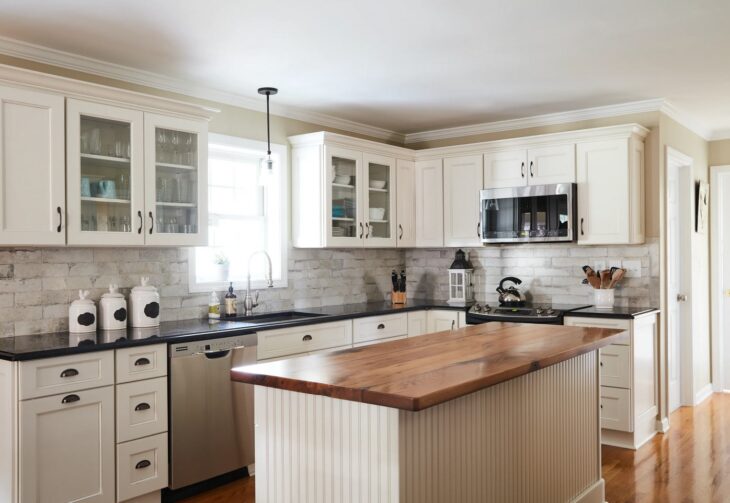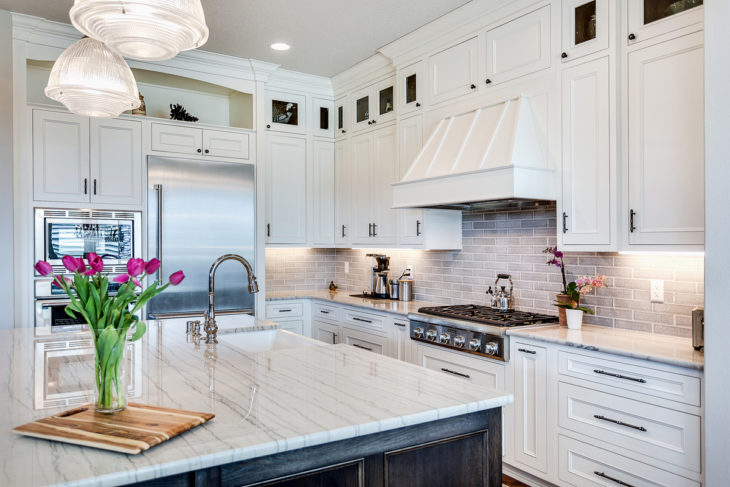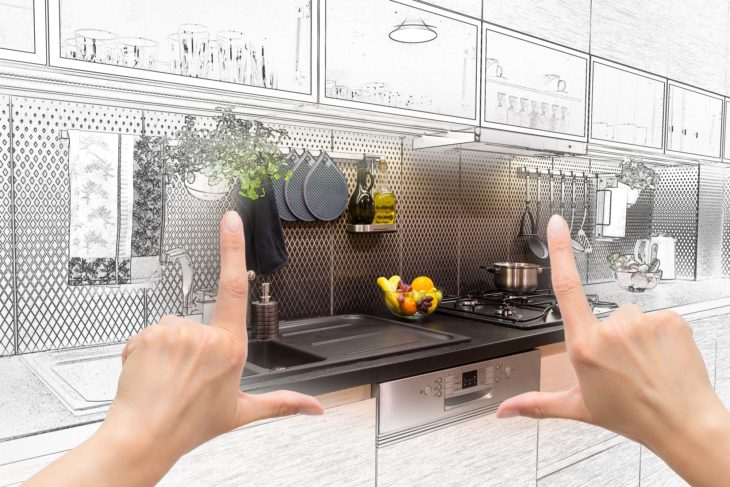Wood kitchen cabinets look classy and fit any interior style. In this article, you will find useful recommendations on how to choose the optimal type of wood, increase its longevity and accentuate its beauty.
Kitchen cabinets made of natural wood never go out of fashion. They are beautiful, durable and 100% safe for human health and the environment. They cost more than their plastic or laminate counterparts — but the surcharge is justified by their premium looks and the singular character of the natural lumber. In this article, we will analyze the peculiarities of diverse types of wood and share recommendations on how to take care of it.

Source: Fabuwood
The Most Popular Varieties of Wood
When buying or ordering kitchen cabinets, people normally choose among the following varieties of this material:
- Cherry is a relatively cost-efficient option — yet it is a bit costlier than maple or clear alder. Even though it belongs to the hardwood category, it is softer than most alternatives. Cherry looks classic and timeless. It possesses a noble dark hue with brownish and reddish stains. Pitch marks and tiny pin knots are considered not as a flaw but as a sign of high-profile woodwork.
- Clear alder is soft and budget-friendly. Its grain is fine and uniform and thus ideal for classic and transitional decor. This wood can be painted, glazed, stained or distressed — after that, it can perfectly fit a rustic homestead or “worn” interior. Its color palette falls within the spectrum from reddish-brown to light tan. With age, this sort of lumber becomes lighter and looks even more sophisticated. To accelerate this process, you should place the cabinet against a window that gets a lot of sunlight.
- Knotty alder owes its name to the knots that add a rural and vintage flair to it. This soft wood looks amazing when painted, glazed, stained, distressed or covered with a worn finish. The older your cabinet, the more dents and nicks appear on its surface. In case of the knotty alder, these imperfections look stylish and sophisticated.
- Maple is available in shops of nearly any price segment. Manufacturers and designers find it easy to work with it. Maple is a hard wood with a fine smooth grain. Its color varies from almost white to cream-colored and easily fits any interior style, be it contemporary, traditional or anything in between.

Source: DeWils
- Hard maple is less dense than oak but has a higher price tag. To make it look contemporary, you should add a clear or natural finish to it. If you are planning to fit this light-colored wood with fine grain in a traditional interior, you should stain it.
- The oak is outstandingly solid and rather expensive. Its color varies from light to medium brown and its surface is ornate with coarse uneven grain. Today, this type of lumber is regarded as an attribute of the classic and official style which might seem too formal and even outdated for a residential premise. But you can upgrade its looks if you discard the traditional stained variety and opt for a newer finish that accentuates the grain. Apart from the regular oak, you might consider its red variety that features a more pronounced grain pattern. The surface of white oak is golden in fact and has a subtler grain.
- Rift oak is pricier if compared to the regular oak because milling it requires more effort. Nevertheless, it is easy to work with and can be found in multiple shops. This hard wood is famous for its distinctive linear grain that looks equally splendid both in vertical and horizontal application. Its natural color can vary from creamy tan to beige and it is often stained to accentuate the dainty grain. Rift oak is a frequent choice for contemporary kitchens. However, it might fit a traditional or transitional interior too, depending on which finish you apply to it and which design elements you surround it with.
- Walnut belongs to the premium end of the spectrum yet is relatively easy to work with. This hard wood possesses a large grain and its natural hue can range from dark brown to creamy white. For a classic interior, you can add a darker finish to it. For a more modern decor, opt for a lighter finish.
You might also consider pine, poplar, hickory, ash wood, birch and other alternatives. Poplar and pine are among the most budget-friendly solutions.

Source: cacabinets
Additional Food for Thought
Since wood is an organic material, you should not expect any two cabinets to look 100% identical. They will inevitably have unmatching grain patterns and their hue might differ. But it only adds charm and character to the natural wood. If you want your cabinets to look as uniform as possible, you should opt for veneered cabinets and not solid lumber.
The finishing procedure accentuates the unique texture of the material. This is the best method to highlight the grain, knots and other exquisite peculiarities of the surface.
As for the color, you do not need to confine yourself to the natural hue of the material. You can paint or stain your furniture to modify its palette. For instance, if you stain a birch base, its look will become identical to the maple.
When you buy the wood in high-end shops, such as Room Service 360, it is finished on all sides. Otherwise, finish it yourself as soon as it is delivered to your house. If you neglect this step, the wood might warp as the moisture content changes. For high-humidity areas, it would be wiser to purchase veneered cabinets and not solid lumber.
All types of wood age when exposed to fluorescent lighting and sunlight. To slow down this process, you should apply a finish that contains ultraviolet inhibitors. But unfortunately, no substance can entirely cancel the aging. The looks of alder, cherry and maple change especially rapidly.

Source: thespruceeats
Conclusion
Your choice of materials might vary depending on where you live. Today, eco-conscious consumers tend to opt for recycled wood instead of the brand-new. If you cannot afford natural wood right now, you might consider thermofoil or laminate that mimic it. Yet synthetic alternatives fail to compete with wood in terms of longevity, wear resistance and premium looks.
